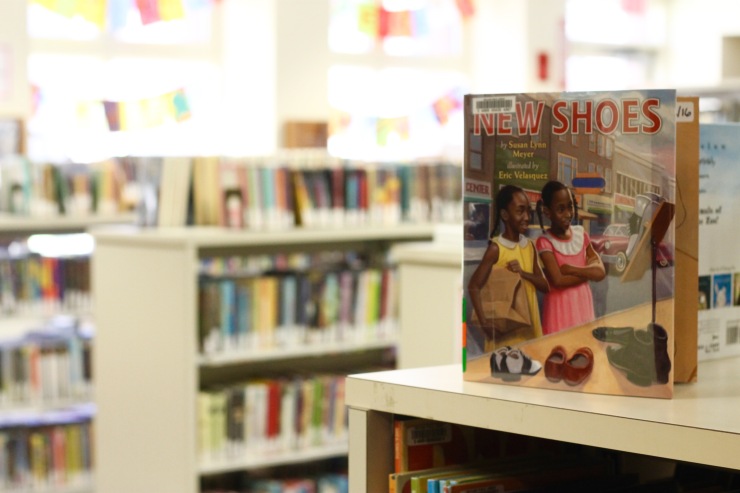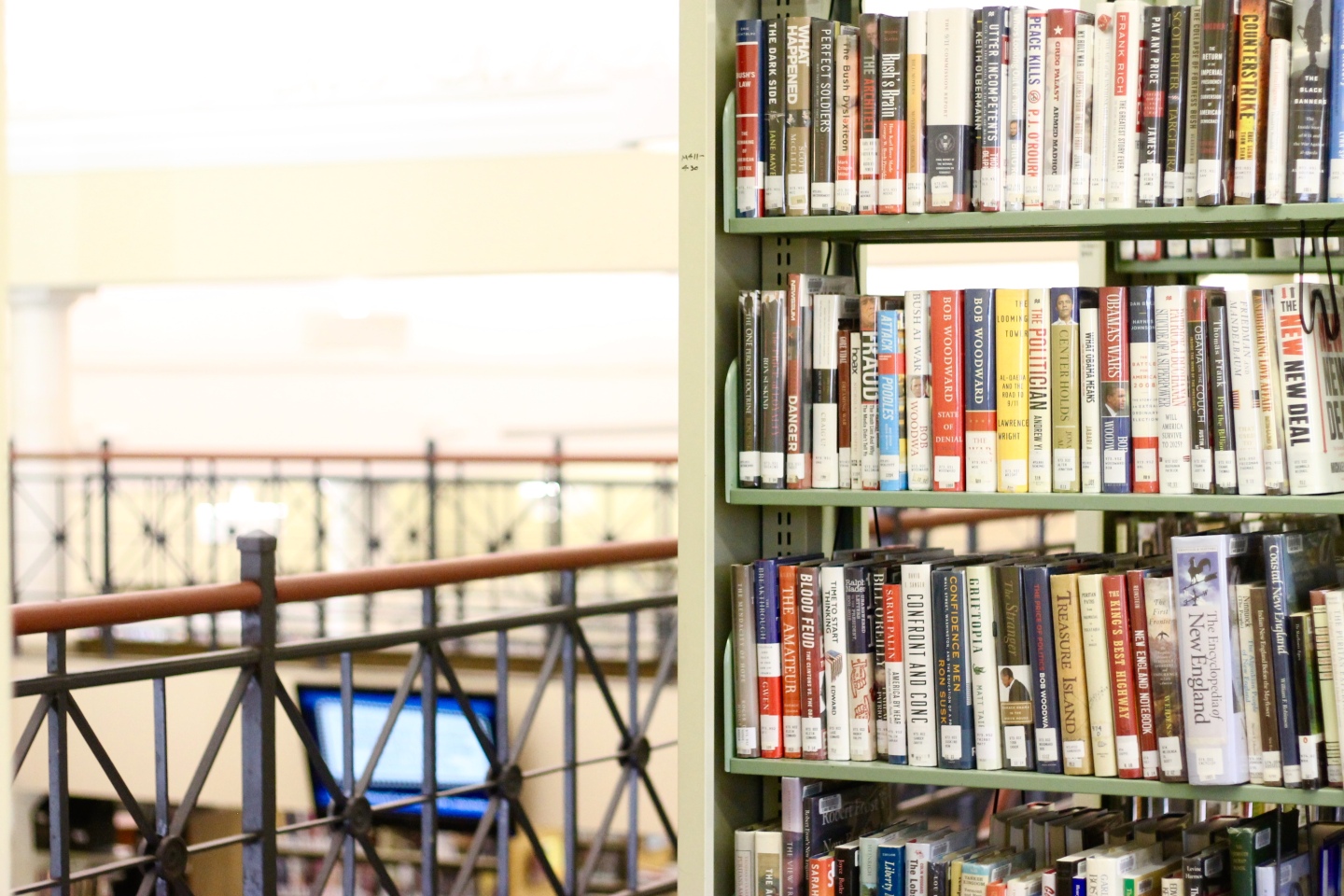My experience
The Wayland Library is a place I have been going to ever since I was probably three or four years old. My earliest memories of the library consist of warm summer days with my mom and two sisters when we would take weekly trips to the kids’ section. I remember the excitement of seeing a room full of colorful books that were all available to me. After about a half hour of curiously losing myself to the daunting aisles, I would walk up to my mom with my arms full of a mountain of books. Disappointed that she’d limit me to only five books, I sadly had to return the other 15 books to their proper home in the shelves.
I’ll never forget the day I got my first library card. Writing my signature on the card was empowering, for it gave me a glimpse into the adult world. With the small blue card in my hand, I felt as though I’ve gained a new sense of freedom and responsibility. I felt independent; the card belonged to me and I had the power to check out any book or videotape by myself, without the help from any adults.
This new freedom only further augmented my love for reading. I feel so lucky that I grew up with a sincere passion for books and didn’t have the distraction of technology that’s so present in children’s lives today. Being a reader as a child has helped me be the person I am today; I am definitely a more knowledgeable, passionate and curious of a person than I would’ve been if I didn’t enjoy reading.
Fast forward 10 years, and I am no longer a young child anymore. Now I am in high school, and the library continues to serve purpose to me. For the past four years, the main room of the library has been my home during my mid-year and final exams. The positive and tranquil atmosphere of the library has helped motivate and focus me to study as hard as possible.
Part of me even admits that I enjoyed studying for these difficult tests; it was always fun studying around many of my peers who chose to come to the library. I always looked forward to the nights during exam week when the library would stay open until 11 p.m. and provide students with free pizza and snacks.
Even though I won’t be in Wayland as much next year, I still hope that the library continues to be a part of my life. I’m sure that the library will still serve a purpose for me over my breaks from college; whether it’s to study or to just ponder through the shelves for interesting books like I once did many years ago, I will be looking forward to return to the place filled with such happy and youthful memories.
History
Opened in the year 1900, the Wayland Free Public Library is one of the most historic and iconic buildings in Wayland. Located in the center of town, the well-known building holds significance to community members of all ages.
The building was designed by architect Samuel W. Mead of Weston. His design was chosen over 14 others, two of which were of Boston’s most highly regarded architect firms. Due to often travel to Italy, Mead was inspired by Roman architecture and Renaissance sculpture. This interest of his is reflected in various elements of the library: the rotunda, the abundance of columns, the red-tile roof and the interior frieze, which is a wall border covered by ancient sculptures and designs. Several years later, Mead went on to design another historic building in Wayland, the mansion house at Greenways formally known as the Paine Estate, which we know today as “Traditions of Wayland”.
Although the current building was opened in 1900, the Wayland Public Library was founded in 1848 as arguably the first free public library in Massachusetts. Some even believe that it was the second free public library in the United States. In 1796, the East Sudbury Library was organized by Rev. Josiah Bridge, pastor of the First Parish Church in Wayland. Later, in 1815, the East Sudbury Charitable Library was formed, which consisted of a collection of moral and religious books.
In 1850, these two libraries combined to form the Wayland Free Public Library. The original location of the library was at the Town House, known today as Collins Market.
A room was set aside for the library at the original town hall in Cochituate. In 1874, a reading room was created in Cochituate, but in 1879 the library was moved to the new town hall located across the street. Shortly after, the plans for the new library were brought to surface and were then enacted.
Today’s use
Today, the Wayland Free Public Library holds many purposes. The library contains a wide range of media and programs aimed to benefit the town and its residents. Events and clubs are held at the library regularly which can be found here. Some events include activities like poetry workshops, story time for children, play groups, book groups, and introductory workshops for smartphones and tablets.
Former library director from 1976 to 2003 Louise Brown believes that the library serves as a unifying factor and a community center for the town used by all ages.
“Out of the 13 or 14,000 people in this town, we have at least 9 or 10,000 people registered with cards, so I know it’s used,” Brown said. “And because of the nature of not having a real downtown area, it’s a meeting place.”
Unlike other departments in the town, Brown believes that the library is a place that generally lacks controversy from residents of the town.
“It’s a good neutral environment, and that’s kind of the whole idea of the library, that our books express all points of view. You may not agree with them, but I think it adds a lot to the community,” Brown said.
At the library, there’s always something going on both day and night.
Starting with the children, story time and play groups are among some of the most popular activities. Brown believes that the children’s department is extremely important to the town, as it is where kids become readers and learn to appreciate books.
For teenagers, the library is used as a popular study place, especially during mid-year and final exams. During these two weeks of the year, the library is open until 11 p.m. and provides snacks and pizza to encourage studying.
For the adults of the town, the library provides book groups, art exhibits, computers and resources that can be used by all age groups.
More specifically, the elderly benefits greatly from the services provided by the library. Many senior citizens do not own a computer, and the library has computer stations that are always available to use.
Brown believes that for people who live alone and may be lonely, the library has many opportunities to meet to people.
“That’s why we allow talking in this library,” Brown said.
While technology is becoming more prevalent in society, many concerns have been raised that books and libraries are becoming less popular.
“I can’t see it being bad. I’ve had people say to me, ‘Libraries are dead, who’s going to read books anymore?’ But a lot of people read books, they really do,” Brown said.
She believes that the increase in technology has helped reduce much of the tedious busy work involved in running the library. In addition, people are still obtaining information from the library, just in a different form.
“Computers are ubiquitous, and there are all kinds of things going on that people don’t understand, and so the library can be such a gateway for people to understand how to use this new technology,” Brown said.
Overall, Brown believes that the town views the library in a positive light.
“I feel that people are happy about the library,” Brown said. “People didn’t complain about the library.”
Future
Currently, plans for library expansion are being created due to the small size of the current building. This past fall at the Town Meeting, Article 6 was past, which funded a $150,000 Planning and Design Study to help submit an application for a Library Construction Grant to the Massachusetts Board of Library Commissioners in January of 2017.
In February of 2016, Design Technique, Inc. was hired as the project manager. This past April at the Annual Town Meeting, Articles 17, 18 and 19 were passed, which were necessary for the completion of the project.
The passing of these articles has allowed investigation for two expansion options: expanding the current library or building a new library at a different location.
Article 17 has allowed the Library Trustees to have control of the former DPW building at the Wayland Middle School. Article 18 has allowed the Trustees to control the undeveloped 26-acre area located behind Traditions of Wayland. Article 19 has allowed the Trustees to remove the aging septic system at the current library, which would potentially make more room to expand the current building.

















Leave a comment